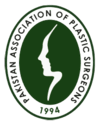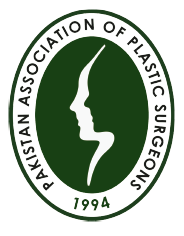Face and Brow Lift
The lower half of the face, from the eyes and ears down, is treated with a face lift, which is also sometimes called a rhytidectomy. Anything over the eyes is treated with a forehead lift.
The face’s skin and soft tissues are raised and repositioned during a face lift. During the methodology, trims are made before the ear, reaching out up and advance along the hairline; excess skin is then eliminated, and the leftover skin is hitched and yet again hung over its new establishments and sewn into position. The face sometimes receives additional fat and tissue as it is redistributed.
Face-lifts are for the most part fruitful strategies and can have emotional outcomes, frequently slowing down the clock around a decade. In any case, patients should know that no cosmetic touch up will at any point make them look 18 in the future, and you ought to know about the constraints before you consent to embrace a medical procedure. Temple lifts, for instance, which utilize similar careful standards and procedures as craniofacial medical procedure, permit admittance to the upper face and make various impacts.
Face-lifts are normally performed under broad sedative, or with nearby sedative and sedation. Patients are likely to need to spend the night in the hospital after the procedure, which takes anywhere from two to five hours.
Facelift complications are rarely very serious, and pain is not a major issue with facial surgery. In any case, all patients should know that there is the possibility supporting harm to the facial nerves. This can cause debilitated development of the eyebrow and lip, albeit such repercussions are not normal and for the most part work on more than a little while.
Following a medical procedure, patients generally experience:
• Sensations of snugness while opening mouth
• Enlarging and swelling
• Feeling low and discouraged in the principal week
• Uneasiness around evening time (resting upstanding with ice packs applied to cheeks is suggested)
Lines can be taken out and following ten to fourteen days patients can ponder getting back to work or going out openly. You will begin to feel more like yourself within four weeks, albeit in a younger form. However, patients are advised to wait six to nine months before evaluating a facelift’s final outcome.
Facial Palsy:
A facial nerve dysfunction that results in partial paralysis of the face is known as facial palsy.
The facial nerve controls the facial muscles, particularly those around the eyes and mouth – for instance, the muscles that lift the eyebrows, close the eyelids and raise the edges of the mouth to shape a grin. It is around there that patients with facial paralysis most generally experience issues.
Patients with facial paralysis experience differing levels of loss of motion in one portion of the face – this loss of motion can make it hard to close the eye, raise an eyebrow, whistle or grin.
At times side effects are gentle and can be treated with a course of steroids, Botox or other medicine. In different cases side effects are serious and expect a medical procedure to reestablish capability and appearance in the impacted region.
In this picture, the different issues that can emerge in left-sided facial paralysis are show. The patient can’t raise his left eyebrow and the brow needs wrinkles. The lower eyelid droops away from the eye and the upper eyelid does not close completely. The face on the left side droops. He can’t raise the left half of his mouth and has a deviated grin.
What conditions could influence a patient around here?
Congenital and acquired forms of facial palsy are possible. It is typically brought on by a condition known as Bell’s palsy, which can be brought on by an infection or by a lack of blood supply to the facial nerve. Facial paralysis can likewise be set off by a growth or stroke.
What kinds of procedures are available for surgery?
There are a scope of reconstructive careful tasks for the remedy of facial paralysis. Each surgical procedure is tailored very specifically to a patient’s requirements because each condition is unique.
At the point when facial paralysis influences the lower eyelid, specialists can do a ligament unite to make a sling which is strung under the eyelid to offer the essential help. At times the opening of the eye is to some extent shut to guarantee that the eye is secured. Using ear cartilage, cartilage grafts can also be used to support and enlarge the muscles in the lower eyelid.
In the upper eyelid, specialists can embed a little gold load under the skin and muscle of the impacted eyelid to assist with shutting the eye. Alternately, the levator muscle in the middle of the eyelid can be lengthened by surgeons. In situations where both upper and lower eyelids are impacted, a temporalis move can be embraced, by which specialists move muscle from the sanctuary to the eyelids to reestablish strength around here and counter the impacts of loss of motion.
Surgeons can support and restore muscles in the same way when facial palsy affects the mouth. Temporalis muscle moves and static slings are utilized to help the decayed mouth muscles. The primary function of the temporalis muscle, which is located in the temple area of the side of the head, is to assist in jaw closure. When facial palsy affects the face, the patient must relearn how to close their jaws and move their face. Shockingly this can promptly be learnt and become natural.
It is likewise conceivable to move a muscle from one more piece of the body as a free tissue move into the incapacitated side of the face. In the main stage a nerve join is taken from the working inverse side of the face, a cross-facial nerve unite. The muscle transfer procedure is completed when the nerve endings across the face have grown for several months. By connecting the muscle’s supplying artery and vein to an artery and vein in the face or neck, the blood supply to the muscle is restored. Its nerve supply is laid out by interfacing its engine nerve to the furthest limit of the cross-facial nerve join. Following a time of weeks the muscle will start to contract in light of typical facial developments. The upside of this more perplexing method is that reestablishing an unconstrained smile can be conceivable.
What could I at any point expect as a patient?
Patients going through a medical procedure for the therapy of facial paralysis can hope to be off work for around fourteen days, with no less than one night spent in emergency clinic following the activity. The majority of people need multiple surgeries to get their paralysis back, but this also depends on how severe the condition is and how complicated the surgery is.
Similarly as with all activities, 100 percent reclamation of capability or standardization of appearance can never be ensured, however by and large reconstructive medical procedure for the revision of facial paralysis is exceptionally effective. Although it can take up to two years before the full results of certain surgical procedures are seen, around 90% of Bell’s palsy patients recover.
I’ll be seeing who as a patient.
A multidisciplinary team will observe you. Specialists will collaborate on this team to ensure that the best possible treatment is provided. A facial paralysis expert group might incorporate the accompanying:
• ENT specialist • Plastic surgeon • Oral and maxillofacial surgeon • Opthalmic surgeon • Speech and Language Therapist • Physiotherapist • Psychologist

